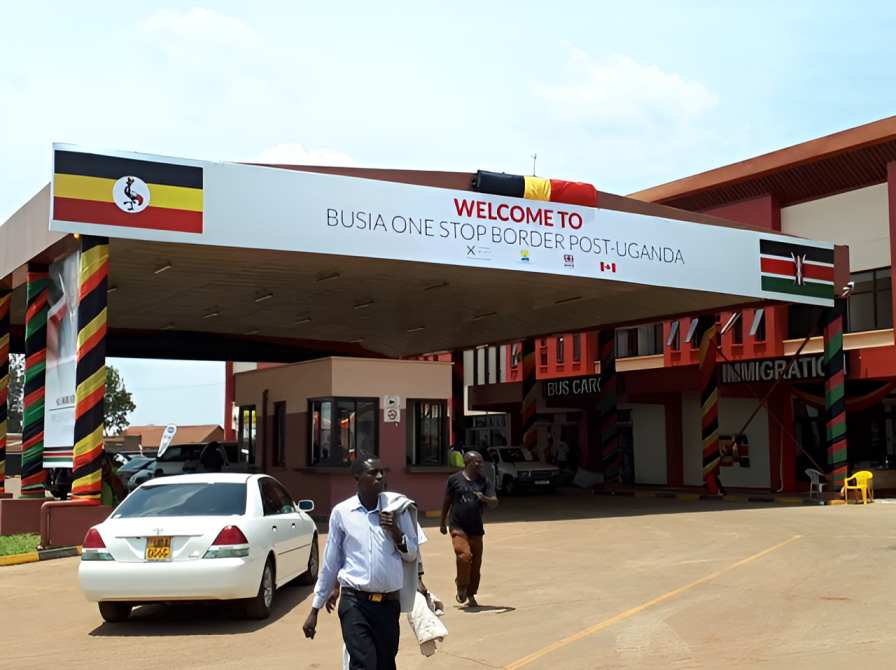Uganda linked to Kenya’s Sh120bn illicit alcohol losses

In crowded slum areas, the report notes that cheap counterfeit spirits are openly sold in small shops and kiosks.
Illicit alcohol now accounts for 60% of all alcohol consumed and sold in Kenya, posing a significant threat not just to public health and safety, but also to the national economy.
A new study commissioned by the Alcoholic Beverages Association of Kenya (ABAK) and conducted by Euromonitor International reveals that much of this illegal alcohol enters Kenya through smuggling routes, primarily from neighbouring Uganda, with networks stretching across the East African region.
In 2022 alone, Kenya reportedly recorded the sale of about 1.9 million litres of illegal alcohol. Traditional homebrews such as chang’aa, busaa, and muratina made up nearly two-thirds of this volume.
These brews have long been consumed in rural and low-income urban communities, but the report warns that a growing share of the problem now comes from smuggled spirits, especially ethanol-based drinks brought in through unsecured border points.
The study points to cross-border smuggling from Uganda and Tanzania as a major contributor, with potent spirits gaining popularity in border areas like Nyanza before spreading to major cities.
Uganda is identified as the leading source of these illicit products, while smuggling routes from Tanzania and Ethiopia are also expanding.
These nations are known for having loosely controlled alcohol industries, allowing unregulated high-alcohol-content drinks to easily reach Kenya.
Once inside the country, the products typically pass through western Kenya and eventually reach urban markets in Nairobi and Mombasa.
Weak border controls and poorly regulated trade channels are key factors fueling this escalating problem.
The report highlights specific vulnerabilities at both official and unofficial crossing points where enforcement is either weak or completely absent.
Smugglers often conceal illicit alcohol within cargo shipments, use boda boda riders for transport, or bring the products across informal footpaths along the border.
The unchecked influx of illegal alcohol is already impacting several sectors. Licensed alcohol producers are losing considerable market share, leading to job cuts, factory closures, and reduced investments in the formal industry.
The government also suffers substantial revenue losses, estimated at over Sh72 billion annually, due to illicit trade. Recovering this lost income could significantly boost funding for critical services like healthcare, education, and infrastructure projects.
The presence of smuggled alcohol in informal urban markets is especially worrying. In crowded slum areas, the report notes that cheap counterfeit spirits are openly sold in small shops and kiosks.
These drinks, often produced with hazardous ingredients such as industrial ethanol or contaminated water, are highly potent and lack any safety or quality certification, posing serious health risks, including blindness and even death.
For everyday consumers, particularly those in low-income communities, the consequences are severe.
Many opt for these illicit options because they are much cheaper than legally taxed beverages; a 250ml bottle of fake vodka can sell for as low as Sh50, compared to over Sh200 for a legal alternative.
However, this affordability comes with dangerous costs. Cases of alcohol poisoning, organ damage, and fatal overdoses are common in areas with high consumption of smuggled alcohol.
Public hospital emergency wards are frequently overwhelmed by patients suffering from severe complications related to illegal alcohol use, further straining an already burdened healthcare system.
Additionally, consumers harmed by these illicit products have no legal protection or means of seeking justice. Unlike regulated alcohol, which comes from identifiable manufacturers who can be held liable, illicit alcohol is produced and distributed by unknown, untraceable sources.
This leaves victims and their families to cope with the consequences alone, without compensation or accountability.
The illicit alcohol trade also disproportionately impacts women and young people. Many youths, attracted by the prospect of quick earnings, become involved as distributors or couriers in smuggling networks.
Meanwhile, women in financially vulnerable households often bear the heavy responsibility of caring for family members suffering from alcohol-related health issues, while also managing the economic strain when a breadwinner is incapacitated or dies due to illicit alcohol consumption.
The expanding scope of this crisis has prompted calls for urgent, coordinated intervention.
At the report’s launch, Benjamin Rideout from Euromonitor International urged Kenyan authorities to enhance surveillance and enforcement at border crossings known for smuggling.
Officials from the National Authority for the Campaign Against Alcohol and Drug Abuse (NACADA), Kenya Revenue Authority (KRA), Kenya Bureau of Standards (KEBS), the Directorate of Criminal Investigations (DCI), and the National Police Service all emphasized the need for a unified and robust enforcement approach to tackle the problem effectively.
A major recommendation from the report is the creation of a dedicated joint task force to oversee the movement of illicit alcohol across all market levels—primary, secondary, and tertiary.
This task force would facilitate intelligence sharing among border patrol, police, customs officers, and alcohol regulatory bodies.
Their duties would include routine inspections of transport vehicles, market outlets, and storage sites suspected of harboring illegal brews.
The report also calls for expanded public awareness campaigns to inform consumers about the serious health risks posed by illicit alcohol.
Many Kenyans are unaware that these inexpensive drinks may contain harmful substances like methanol, which can cause blindness or even death in small amounts.
